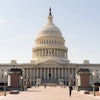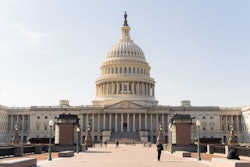
The Center for American Progress examined federal data to map the scope of funding cuts that have targeted over 4,000 grants valued between $6.9 billion and $8.2 billion. After accounting for funds already spent by institutions, the administration has cut between $3.3 billion and $3.7 billion from higher education programs nationwide.
The analysis, titled "Mapping Federal Funding Cuts to U.S. Colleges and Universities," demonstrates that these reductions have affected institutions across all 50 states, impacting both large research universities and smaller colleges regardless of their political affiliations or geographic locations.
South Dakota leads the nation in per-student funding losses, followed by Hawaii, Massachusetts, Idaho, and Maryland in the top five most affected states. The complete list of the 15 hardest-hit states also includes Montana, South Carolina, Delaware, Rhode Island, New York, Tennessee, Washington, Texas, Arizona, and North Carolina.
Notably, the cuts have affected institutions in both Republican- and Democrat-governed states at similar rates relative to their student populations, suggesting the impact transcends political boundaries.
"These data show that no institution, big or small, is safe from being targeted, and all states are suffering the consequences of cuts," said Greta Bedekovics, co-author of the analysis and associate director of Democracy Policy at the Center for American Progress.
The funding reductions have disrupted ongoing research across diverse fields critical to national interests and public welfare. Affected research areas include national security initiatives, agricultural innovations to boost farm profits, medical research focused on incurable brain tumors, and studies aimed at reducing opioid abuse related to chronic pain management.
Will Ragland, co-author of the analysis and vice president of research at CAP, characterized the cuts as part of a broader pattern of reduced federal investment in scientific research and development.
"The attack on higher education is part of a larger pattern where the administration is cutting billions of dollars in federal investments to scientific research and development and trying to dictate what scientists can and cannot research," Ragland said. "The result is a hostile ecosystem that is already driving scientific talent away from the United States."
The analysis warns that the cuts threaten the long-term success and reputation of affected institutions, potentially hampering their ability to attract top talent and maintain their competitive edge in research and education.
Faculty, students, and researchers nationwide are bearing the immediate burden of these terminated grants, while the broader implications extend to entire communities that benefit from university-based research and development.
"By targeting billions of dollars in federal grants for termination, the administration is depriving students, professors, researchers, and communities of critical investments meant to improve our health, agriculture systems, job opportunities, national security, and so much more," Bedekovics said.
The researchers emphasize that the impact of these cuts will extend far beyond individual institutions, potentially affecting America's economic competitiveness and scientific leadership for decades to come.
The comprehensive mapping of affected institutions provides concrete evidence of how federal funding decisions directly impact higher education's capacity to conduct research, educate students, and contribute to national priorities across multiple sectors.
The analysis serves as a detailed accounting of the administration's approach to higher education funding, offering stakeholders and policymakers a clear picture of the scope and scale of cuts affecting American colleges and universities nationwide.















